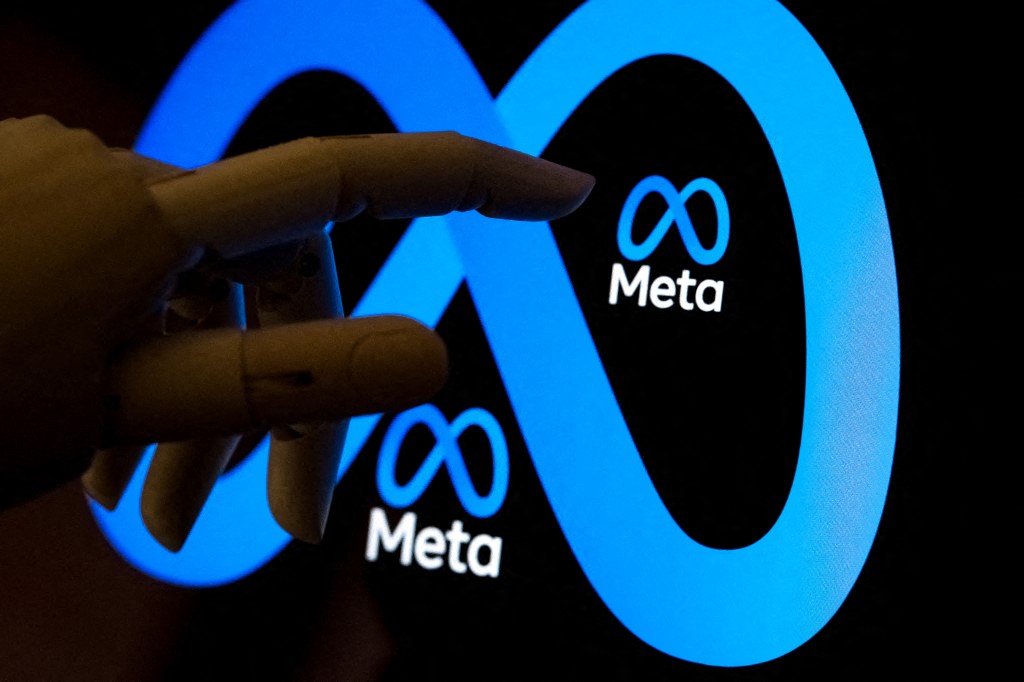AppsFlyer has released its Top 5 Data Trends of 2022.
Here are the key trends:
1. Total app installs grew 10% in 2022 despite post-Covid digital cooldown, privacy changes, and economic downturn
15 years after the first iPhone was released, it seems smartphones have been embedded in our lives for years now. In other words, the mobile app space is showing signs of maturation, which is why it’s no surprise to see mobile growth naturally declining over time.
2022 still delivered a 10% year-over-year rise in overall installs despite a relative slowdown, headwinds from Apple’s privacy changes, somewhat unexpected user behaviors post-Covid, and looming economic recessions affecting marketing budgets (more on that later).
- Covid digital surge did not stick: Clearly, the 2020 Covid-driven digital surge (35% YoY growth in 2020) was an anomaly, and did not become the new normal post-Covid, as many have expected or at least hoped for. AppsFlyer sees this “Covid bump” prominently in Android gaming, notching 52% growth in 2020.
- Android installs grew 9% YoY: This was driven primarily by the geographic dimension with an impressive 18% surge in the largest Android market — India. On the other hand, we see the effects of the war in Ukraine as Russia saw overall Android installs down 18% from last year. The 9% growth may have been higher too if not for reduced budgets in non-gaming apps amidst an economic downturn.
- iOS installs grew 16% after last year’s ATT low: Apple’s release of its App Tracking Transparency (ATT) framework had a massive impact — mainly driven by non-gaming apps. First, many fully digital products and experiences exist only on iOS, such as health & fitness, photo editors, kids apps, and lifestyle apps. Second, non-gaming is not as marketing-driven as gaming; so, when it comes to overall installs, ATT’s impact was not as pronounced as in gaming. Although games recovered from the ATT shock of 2021, they still showed some growth in 2022 (from -10% to +4%). Clearly, gaming apps on iOS are still challenged by the post-ATT data reality.
2. Ad spend down 5% YoY but the downturn was felt towards the end of the year with a 20% YoY drop
Overall, the platform sees a 5% drop YoY in UA spend for the entire year, but when looking at the last three months, when the economic slowdown really hit, there was a significant difference between 2021, which saw an 8% budget rise between start and end of the year, and 2022, which saw a 20% decline.
- Sharp differences between platforms and verticals:
| Cost YoY | NOI YoY | CPI YoY |
Android Gaming | 3% | 12% | -8% |
Android Non-Gaming | -22% | -2% | -20% |
iOS Gaming | 23% | -9% | 33% |
iOS Non-Gaming | -23% | -24% | -2% |
Android Gaming showcased their efficiency, with 8% reduced CPIs and yet 12% higher NOIs driving a small 3% increase in overall UA ad spend. Marketers acquired more users for the same budget and re-invested their efficiency to scale further.
iOS gaming apps "accepted" the 33% rise in CPI by raising budgets by 23%. Unfortunately, this still drove 9% fewer NOIs.
Android non-gaming saw a much larger drop in CPI at 20%, which leads to a 22% decrease in budgets. Android marketers prioritized efficiency again and used savings to mitigate a small 2% drop in NOIs.
iOS non-gaming saw a 23% reduced spend despite a small 2% drop in the cost of installs, as marketers moved away from paid user acquisition into other forms of activation and engagement.
- Gaming is more recession-proof than non-gaming: This seems to have allowed the former to raise budgets compared to non-gaming which cut budgets. Most gaming IAPs are micropayments (which are easier to make when there’s an economic downturn), while non-gaming’s normal and larger IAPs may have consumers thinking twice about purchases (e-commerce, travel, transportation, etc).
- Non-gaming drop in finance and food delivery: Non-gaming budget reductions were largely driven by fintech in general and crypto in particular — finance has the highest CPI in non-gaming so if they drop budgets, it has a big impact. Also, food delivery had money to spend in 2020/21 but this year, they could no longer spend like before.
- SSOT can turn things around: The use of a Single Source of Truth (SSOT) to de-duplicate non-organic installs on iOS can have a dramatic effect on budgets and ROAS. A recent AppsFlyer study observed an average of 29% uplift in attributions and 40% reduction of eCPI.
- Owned media continues to surge: With the challenges of remarketing in iOS, it’s no surprise that the use of owned media to re-engage existing users through push notifications, email, and in-app messages has jumped almost 45% since April (compared to only 17% lift in Android). Marketers are catching on — 2022 has seen tremendous demand for owned media remarketing campaigns that don’t hurt tight budgets and are not affected by privacy shifts. Not to mention that owned media — whether acquisition or re-engagement — is practically free! Many companies are doubling down on building a strong brand image, and owned media allows a bespoke channel of communication to both loyal and new users.
3. Apps spent $80 billion on user acquisition in 2022, a slight YoY drop after the 40% surge in 2021
Global app install acquisition budgets in 2022 reached an estimated $80 billion in total — including China.
The figure represents a slight decrease from 2021 after a 40% surge in 2021 compared to 2020. Remember, it’s a whole new post-Covid ball game out there, and AppsFlyer can see the economic slowdown hit even harder when looking at the last several months (see trend 2 for more).
On the vertical front, gaming was the largest category with $27 billion, followed by finance at $8.5 billion, casino real money at $5.2 billion, and shopping at $3.4 billion (excluding China).
4. ID matching rates are up 10% to reach 26% of iOS NOIs as prompt optimization can deliver real value and better ad experience
- The IDFA is not dead: 2022 saw a 10% rise in ID matching rates which reached 26% of all NOIs in 2022 (including SKAN). It seems that apps are optimizing their ATT prompt experience and more users are coming around to the idea of providing consent since it delivers a better ad experience. Clearly, the presence of IDFA is not negligible, although it has obviously experienced a massive drop since pre-ATT days when ID matching rates were above 80%. Capturing the behavior of consented users is highly beneficial for modeling, optimization, and benchmarking of your entire user base. Apps that have not yet implemented an ATT prompt should highly consider changing their tune.
- Ad load increases post-ATT: Another shocker is that there are more ads now than before ATT. So, the average user is now served more ads that are probably mostly irrelevant. Instagram, YouTube, TikTok, and Apple have all introduced new ad units across more inventory to counteract existing ad formats that are worse off post-ATT. As a result, there is increased ad load leading to more irrelevant ads per user, which creates a negative user experience. Indeed, that is why showing and optimizing the prompt for consent is so important heading into 2023.
- Pressure to deliver short-term revenue: It is also possible that management pressure to deliver amidst the economic slowdown has forced the display of more ads for CPM revenue (from the publisher side). This yields easier short-term revenue at the expense of potential long-term damage such as churn, lack of effectiveness due to irrelevant ads, and ad fatigue.
5. Non-gaming apps enjoy a 20% jump in IAP revenue while games suffer a 16% drop
AppsFlyer can clearly see the difference in gaming app IAP revenue between iOS and Android. Games are much more affected by ATT and the drop in data signals for optimization, which is why they haven’t grown revenue as much as non-gaming since ATT.
Beyond privacy, it’s also important to note that the drop in gaming is a known phenomenon for this vertical. Some gaming apps have cash cow apps or franchises, or are able to consistently create new hits, but many gaming companies don't — sometimes they have one-hit wonders — so a negative trend in gaming IAP for the same companies in the entire measured time frame is logical.
It appears non-gaming apps can drive confidence from this IAP jump and they may not have to reduce ad spend budgets, as discussed in trend #2 (although it's important to remember that this is overall revenue from all consumers, not just marketing-driven users who are a minority in this vertical).
In-app advertising revenue is rising: Contrary to IAP, the platform sees continuous ad revenue growth driven primarily by games across both platforms — probably because hybrid monetization models are gaining traction and because of what was mentioned earlier. Pressure to deliver due to the economic slowdown led companies to display more ads for CPM revenue — easy short-term revenue.
BONUS: The time has come to connect to connected TV (CTV)
The cord-cutting has ended. The age of connected TV is here. Advertisers are searching for new ways to reach their target audiences, and CTV provides a consistent, streamlined way to reach large, casual audiences.
According to the IAB, CTV ad spend is projected to grow globally by 14.4% in 2023 and will be the fastest-growing channel, beating out paid search and social media. Given this projection, it is no surprise that according to 98% of brands, CTV advertising will one day be bigger in terms of ad spend than mobile advertising, with 25% saying this will happen in the next 2-3 years, and 62% within 5 years.
Indeed, total cross-platform CTV clicks measured by AppsFlyer grew 20.6% in just 3 months from July 2022 to October 2022.
Now is the right time to start advertising on CTV before it becomes a heavily crowded and saturated space. The earlier you get into a new channel, the more you'll get out of it.






